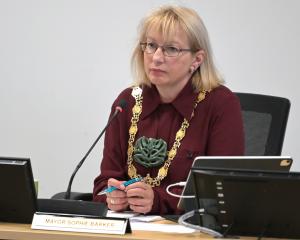Who would have thought this? New Zealanders these days are covering up and wearing masks en masse.
Not long ago many looked a little askance at the occasional person wearing a mask while walking down the street.
How the world has changed. Now, masks are everywhere, in various shapes, shades and patterns as they help protect others and us.
It is also not that long ago that the Government was resistant to mask mandates. The University of Otago’s Michael Baker was converted to their efficacy early in the pandemic. But it took a long time — far too long — before Prime Minister Jacinda Ardern and director-general of health Ashley Bloomfield became convinced.
The World Health Organisation itself was slow to promote, arguing at first there was not sufficient evidence for their effectiveness.
It was as if the West was stubborn, even arrogant, about learning lessons from East Asians and their experience with viruses.
The Government this week strengthened mask-wearing rules as the Omicron Covid variant begins to gather speed along the runway. It is set to take off and fly.
Gone are the bandanas, the scarfs, the T-shirts temporarily pulled over the face.
Teachers and school pupils from year 4 will require masks. Children will require them on school transport and trips. Teachers, too, will need at least those blue surgical masks as will staff in close-contact businesses.
In the meantime, pupils will learn, perhaps after initial hesitancy, that masks are like the wearing of seatbelts or uniforms. You just do it.
Many schools themselves could well extend requirements to younger pupils.
Many an office worker, as well, now wears a mask inside, hardly the most comfortable attire. They, no doubt, are feeling more sympathy for restaurant staff and retail assistants who have had to live with steamed-up glasses and irritating coverings.
As usual, any decision from on high will strike somewhere along the spectrum of attitudes. The Government is too strict for some and too slack for others.
On this occasion and in the interim, the Government has the balance roughly right. It would have been impractical to insist at present on high-grade masks for everyone, although tougher standards could be looming.
Prof Baker believes children as young as 2 could be supplied with masks. The under-5s after all, as an unvaccinated group, are a potential reservoir for Omicron infection and spread even if they are unlikely to become seriously ill themselves.
As he pointed out, the United States Centres for Disease Control and Prevention recommends anyone aged 2 or older who is not vaccinated or up-to-date on vaccines should wear masks in indoor public spaces. So, also, should those in an area of substantial or high transmission even if fully vaccinated.
This could be hard to achieve in practice, even if small children will copy their parents, siblings and peers if such became the thing to do.
Diners, as well, will become accustomed to donning masks when they rise from their tables to go to the toilet or to depart.
Omicron is coming and New Zealand needs to slow its spread. Even though its individual impact is, on average, much less critical than Delta, overseas experience tells us it will rampage.
There will be sufficient serious illness to overstrain this country’s already creaking medical care among the anticipated hundreds of thousands of cases.
Our home departure checklist has grown from the likes of keys, glasses, mobile phones and wallets or handbags to include masks.
It is just the way in 2022. Mask-wearing was not part of the New Zealand culture. But we are becoming used to it. We can adapt and we are doing so.












